This blog post aims to discuss Nixon’s notion of of ‘slow violence’. This will be done through presentation in the form of a photo essay, which identifies an environmental concern that can be regarded as a form of ‘slow violence’, and will be assisted by using images, a narrative as well as symbols which can be used to increase the public’s awareness on the particular concern of plastic pollution.
Nixon (2011:2) describes slow violence as “a violence that occurs gradually and out of sight”. Slow violence entails a destruction that is delayed and has a slow, but violent effect on the environment. Most people would consider violence to include a quick, mass destruction that occurs explosively out of nowhere, without warning (Nixon, 2011:2). But the most dangerous of the violences that may occur to the environment occur over time. Plastic pollution is an example of this.
When the world began to mass produce plastic, they saw it as a cheap means to make cheap materials. It was considered a break through- a brilliant invention. The people of the time did not realise just how dangerous plastic would be to the environment. Plastic is a non-biodegradable material, and therefore it cannot return to a raw form like other materials such as paper. A lot of plastic materials only have one use in them, and so they end up being dumped as waste. And unfortunately, the correct procedures for the disposal of plastic aren’t even followed. People throw their plastic waste wherever they want, whether it be in a dustbin, or a flower bed. People do not seem to realise just what the plastic is when they hold it in their hands- the danger of the plastic, the violence of the plastic.
There are many new laws and organisation in place to promote refraining from using plastic, or recycling plastic; but unfortunately, even in the era of ‘going green’ and ‘reduce, reuse, recycle’, people are still not taking the danger of plastic seriously enough. And it will catch up to them eventually.
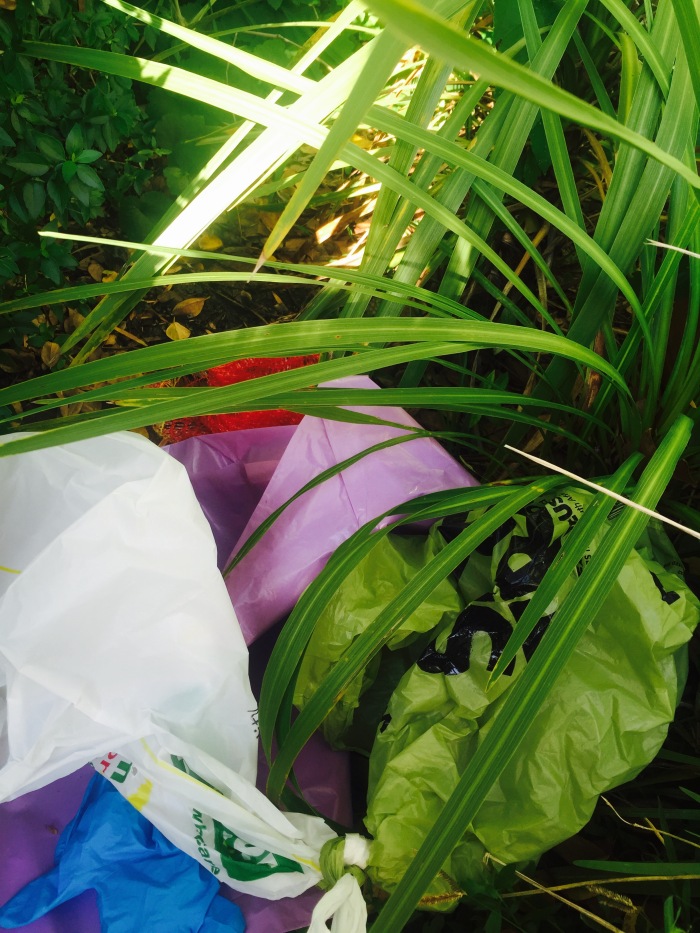
The image above represents plastic pollution in a garden area. The bright plastic material stands out in front of the green plant life that surrounds it. Bright colours are usually associated with vitality, health and joy (as will be shown in the images that follow), however, in this particular image the plastic material definitely looks out of place. The plastic bags amongst the plant like remind me of a poem that I did in school about Johannesburg. The poem, by Walter Serote, and speaks of the city and it’s pollution and it’s “neon flowers”, which are not real. That’s what the plastic makes me think of- an artificial, obnoxiously bright material that attempts to steal the show from the real beauty around it.
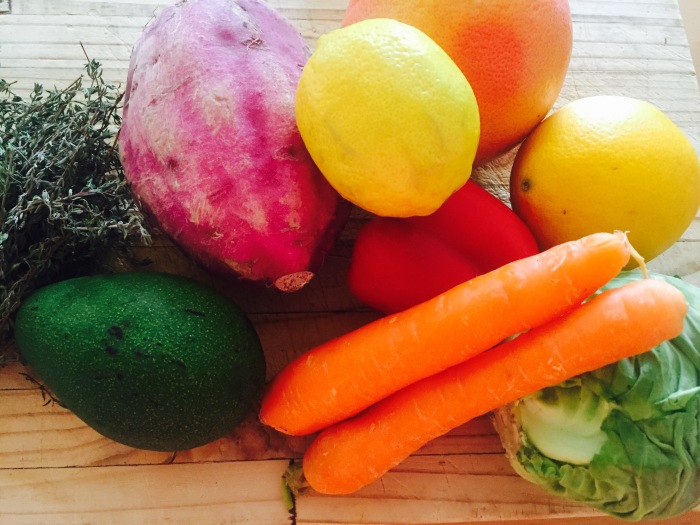
The second image is of fruits and vegetables taken out of my own kitchen. Here one can see more bright colours, except this time there is a very positive implication intended. My mother always told me that a meal should contain a lot of brightly coloured fruits and vegetables, as it is beneficial to my health. This is definitely depicted in this image. There is a sense of irony when one contrasts this image with the one above it, because these fruits and vegetables come from the very soil that is lying beneath the plastic bags. The soil and the plants work together, whereas the plastic stops the soil from doing it’s job. It is also ironic that humans placed the fruit and vegetable seeds in the ground to grow something healthy and nutritious, but they have also placed the plastic material in the way which is creating a polluted, unhealthy environment.
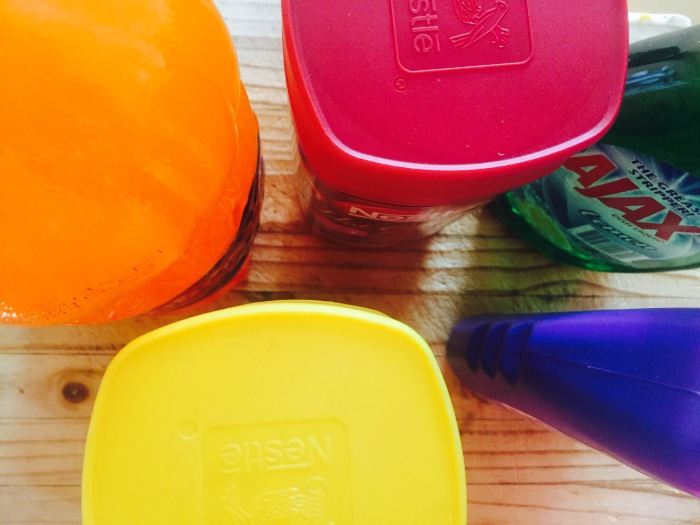
The above image is also ironic when contrasted to the one which comes before it. Again, bright colours are seen on the very same tray that the fruits and vegetables were on, but one can see that the fruits and vegetables have been replaced with household products which might be beneficial to the household, but are detrimental to the environment. All of these products are contained in plastic packaging, this plastic will probably not be reused, and therefore will be set aside as waste, adding to the earth’s ever-growing plastic pollution.
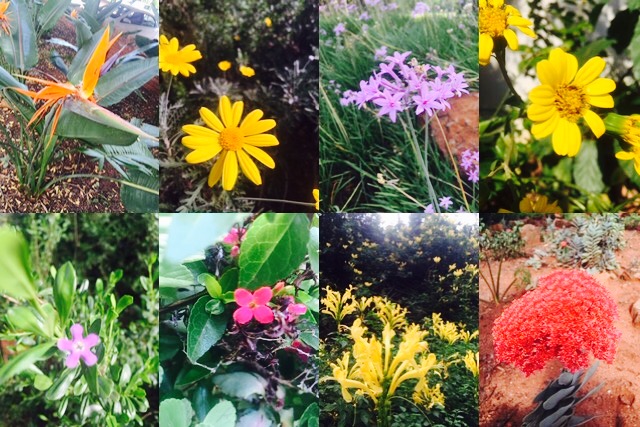
The above image is a collage of various flowers that I took pictures of. Their colours are bright, and their stems are firmly planted into the ground, unlike the plastic pollution that was shown in the first image. These photos show the natural beauty that is being compromised by the imitating plastic that lies upon the surface of the soil in which the flowers are embedded.
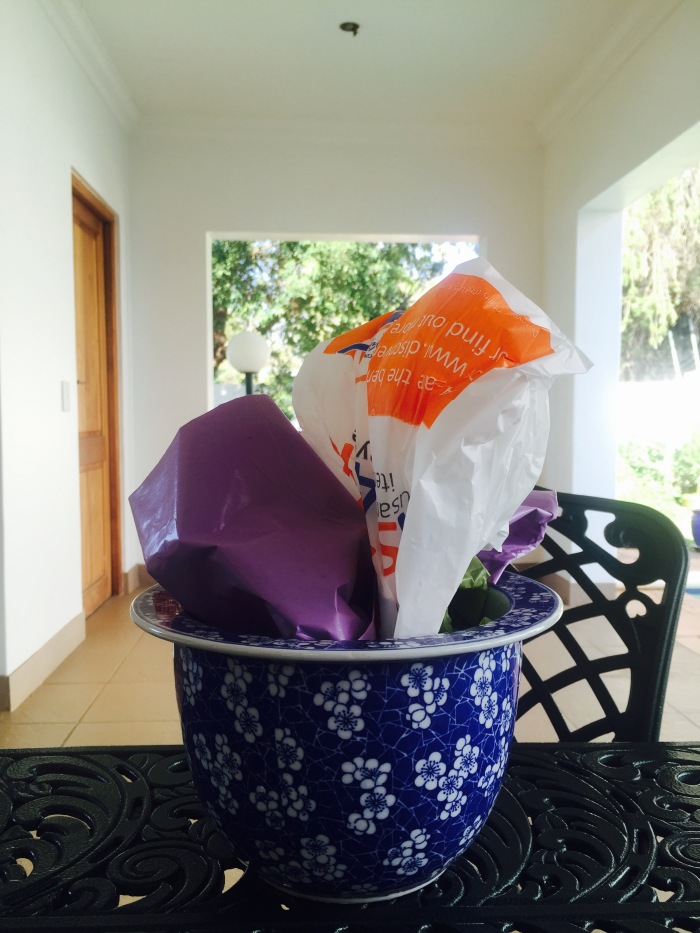
I have provided a fifth image because I felt that it brought about an important message about the slow violence of plastic pollution. It is clear that us humans are the ones who are planting the imitating, artificial, lifeless plastic into the world, just as this plastic is planted into the pot in the image above. And so, it is our duty to prevent planting anymore plastic that will add to the slowly unwinding fate of destruction.
Like any slow violence, it is almost impossible to reverse the effects that plastic pollution has already had on the environment, nor can the possibility of the final violence be stopped. But, one could slow down the slow violence even further by refraining from the use of plastic materials.
Source Consulted
Nixon, R. 2011. Slow violence and the environmentalism of the poor. Cambridge: Harvard University Press.